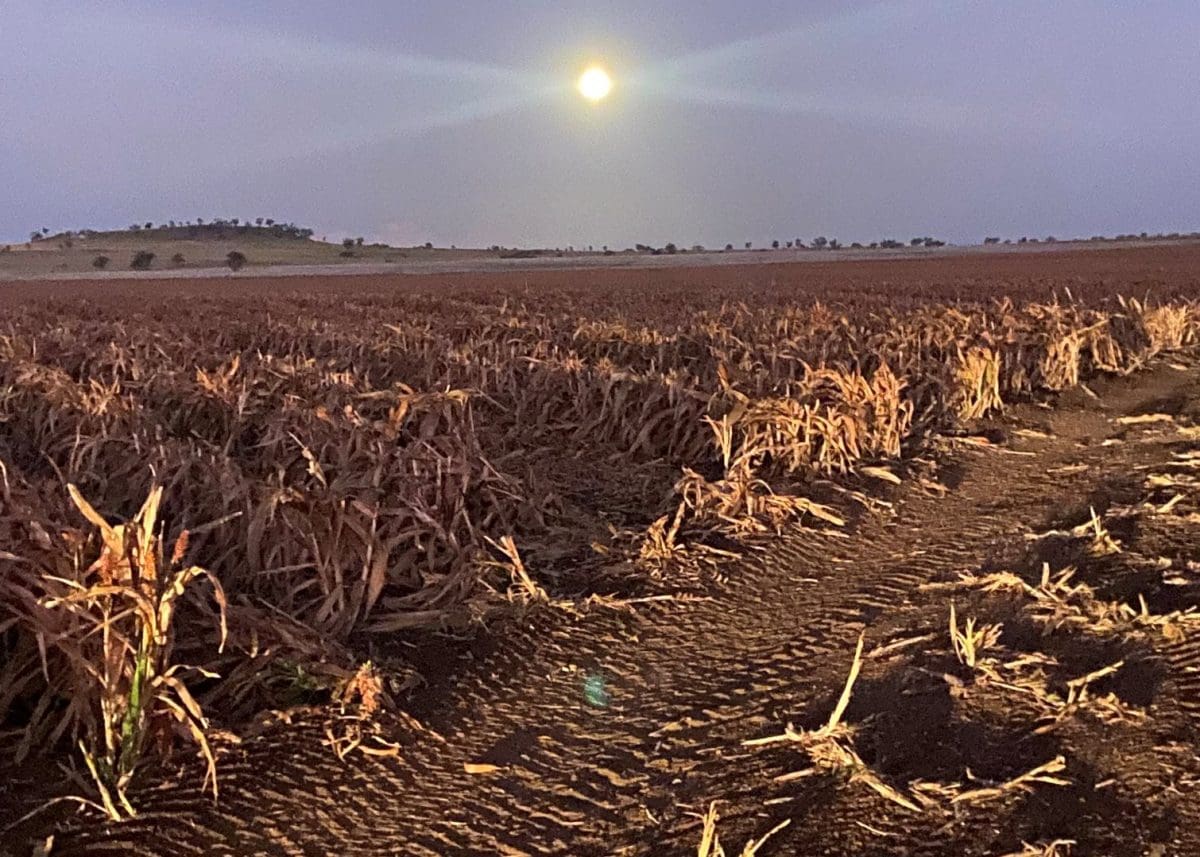
Harvesting sorghum on the north-west slopes of NSW. Photo: Andrew McClenaghan
BARLEY markets have firmed $5-$10 per tonne this week on hopes that China may resume its buying of Australian product after a three-year absence.
Recent rain, with more on the forecast, has shifted grower attention to planting, and away from selling and out-turning grain over coming weeks.
This has created a few shorts in the domestic market to offset what feels like a softer tone globally ahead of Northern Hemisphere new crop.
| Today | Apr 6 | |
| Barley Downs | $420 | $415 |
| SFW wheat Downs | $410 | $408 |
| Sorghum Downs | $415 | $415 |
| Barley Melbourne | $370 | $360 |
| ASW Melbourne | $415 | $413 |
| SFW Melbourne | $410 | $408 |
Table 1: Indicative prices in Australian dollars per tonne.
In an internal report, StoneX senior export cash grain broker Nick Poutney said the company welcomed Monday’s news of China’s review on Australian barley tariffs.
“We would expect trade flows to be revived later this year, should negotiations between the Chinese and Australian governments be successful,” Mr Poutney said.
“Prior to the 80 percent import tariffs that have affected the market since 2020, Australia regularly exported 3 million tonnes of barley, and up to 6Mt on occasion, to China each year.
“The Australian grains industry responded well by diversifying export opportunities in recent years, successfully competing against European and Black Sea barley for export to the Middle East and opening up new markets like South America.
“Nonetheless, in recent years barley production has grown from an average of 9 million tonnes to 14 million tonnes, so a positive resolution following the Chinese review in coming months would be timely for the market.”
Barley leapfrogs sorghum in north
Barley remains in solid demand from feedlots, and this week has become more expensive than sorghum on a delivered Downs basis for the first time in months.
Growers with barley stored on farm or warehoused in NSW are seeing considerable upside to prices in coming months if Australia resumes bulk exports to China, while Queensland stocks of unpriced barley are thought to be minimal.
Despite some scattered storms over Easter, the tail end of the sorghum harvest is continuing at pace in southern Queensland and northern New South Wales.
The Central Queensland sorghum harvest is expected to start in earnest next month.
Trade sources report storages in Brisbane receiving sorghum for export to China are filling, and buying has backed off as delivery slots become hard to book in the short term.
Planting of grazing and dual-purpose crops is in full swing following recent rain, and with more on the forecast.
Sowing ramps up in south
In the Victorian Wimmera, Farm Trade Australia director and Rupanyup grower David Matthews said recent rain, and more on the forecast, has growers “off to a flying start” with their winter-crop planting programs.
“There was 30mm plus of rain over the Easter weekend…and growers are planting canola and vetch now,” Mr Matthews said.
Hopes for a resumption of Australian barley exports to China have been widely welcomed by the trade and growers, but Mr Matthews said a big swing into barley was unlikely, as growers generally had a fixed area for cereals, pulses and canola in their rotation.
“It might move the dial a little bit between wheat and barley.”
Mr Matthews said growers would be keeping an eye out for spikes in the market on which to sell grain warehoused or held on farm, but most have reduced stocks to comfortable levels ahead of planting.
“There’s been a heavy selling program in the lead-in to planting.”
Trucks, augurs and other equipment are now being used by growers to shift seed and fertiliser, and out-turn from farms is expected to fall away until June, when planting should be completed.
“A lot of growers avoid having to deliver between April through to the end of May.”
In South Australia, Vater & Co director Kim Vater said the cash market for cereals was “a bit of a mixed bag”.
“Some of the domestic guys are a bit short which is holding the price up on some grains, but export has backed off,” Mr Vater said.
In SA, the bid-offer spread was out to $30/t on some cereals as consumers drop their buying ideas, but growers hold firm.
“Some of the guys are paying $400/t for wheat, and they don’t want to be paying that in another couple of months, so they’re going hand to mouth.”
“Once sowing starts, it becomes difficult to get grain off farm.
“I’d anticipate there’s still some warehoused grain out there, and end users might have to stump up and go to the trade to get covered.”
SA has had some handy rain in the past week, and at least 10mm is forecast for the coming week as a byproduct of Tropical Cyclone Ilsa, currently off the north-west coast of Western Australia.
“Some people have sowed a little bit of feed, and the fertiliser companies are booked out for the next week for pick-ups.
“We’re expecting 20-40mm over the weekend, and people are getting excited about getting sowing with canola and beans.
“We’ve had enough rain already to see a green tinge.”
Sowing is also advancing at pace in WA, and up to 50mm has fallen in the past week in the grainbelt.
While TC Ilsa will severely impact much of northern WA, southern regions have minimal falls on the forecast into next week.
Grain Central: Get our free news straight to your inbox – Click here

HAVE YOUR SAY